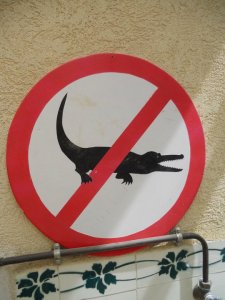Esperanto, language of the world
From the HERMA student lecture series 2014-15
Language. The intangible part of any culture, ever changing, fluid and living entity. Language echoes the past, tells the present and reflects the future. It is the bridge and the tool which facilitates human contact and fosters understanding of others. It was these noble ideas, that Ludwik Lazarus Zamenhof was driven by when he created the artificial language Esperanto.
Zamenhof was born in 1859 in Bialystok, Poland (at the time Russian empire). Bialystok was a lively little town, where Jews, Poles, Belarusians, Germans and other ethnicities lived together. Zamenhof noticed quarrels arise easily between them and he was convinced language miscommunication largely contributed to this.
Thus, an idea started forming in his mind, which eventually led to creation of Esperanto. His vision was to create an international language, easy and logical, one which would help better mutual understanding and communication between people. In 1887, Zamenhof created the Unua Libro, detailing Esperanto. He, himself called it internacia lingvo (international language). The name Esperanto actually derives from the pseudonym doktoro Esperanto (Esperanto = one who hopes), under which Zamenhof wrote the first book.
The estimation is that today between 100,000 and 2,000,000 people worldwide fluently or actively speak Esperanto. Within this number there are approximately 1000 Denaskuloj or native Esperanto speakers, an interesting fact given that no country adopted Esperanto as its official language.
A question may be posed, considering Esperanto’s origin: can it be used to convey the complexity of culture and most abstract human ideas? The answer is a resounding yes. William Auld, Scottish poet, author, translator and magazine editor, wrote chiefly in Esperanto. His opus in Esperanto, particularly modernist poem La Infana Raso (The Infant Race), earned him a Nobel Prize in Literature nomination in 1999. He viewed Esperanto as
the expression of a common human culture, unencumbered by national frontiers. Thus it is considered a culture on its own (Auld 1998).
Beside Auld, notable Esperanto writers are Marjorie Boulton, Kalman Kalocsay, Nikolai Nekrasov, Claude Piron and many others. Other than creating original body of work in Esperanto, there have been many translation of the world literature into Esperanto. Auld translated Lord of the Rings by Tolkien, Sonnets by Shakespeare and Zamenhof himself translated The Old Testament.
Literature is not the only vehicle for Esperanto culture. It has been expressed through music, film, theatre plays and habits that Esperanto community shares. From pop to hip hop, Esperanto music covers it all. For a taste of it, one could tune into 24 hour Internet radio station Muzaiko. Some of notable Esperanto groups and musicians are La Perdita Generacio, JoMo, Dolcamar, Kaj Tiel Plu and Kajto.
Being it during Unversala Kongreso de Esperanto (World Congress of Esperanto) or number of other gatherings and occasions, Esperantists meet year round and socialize in their unique way. One thing that they earnestly try to avoid is to krokodili (talk crocodile, meaning to talk in languages other than Esperanto when they meet).
To dive into the world of this language and culture, one might consider a visit to two existing Esperanto museums: The Esperanto Museum of the Austrian National Library and Esperanto Museum, in Zaozhuang University in east China’s Shandong Province.
References
Auld, W. (1998). La Fenomeno Esperanto. Rotterdam: Universala Esperanto-Asocio.
Photos by Gorana Sekulic, unless otherwise stated.
 Gorana Sekulic is student in 2014-15 cohort of MA Heritage Management. She has a bachelor degree in Journalism and Communication, as well as work experience in the fields of journalism, film and gender equality. She is interested in seeing how communication and language can work together with culture and heritage to make it more visible.
Gorana Sekulic is student in 2014-15 cohort of MA Heritage Management. She has a bachelor degree in Journalism and Communication, as well as work experience in the fields of journalism, film and gender equality. She is interested in seeing how communication and language can work together with culture and heritage to make it more visible.



